By Jim Duffy and P.J. Norwood

(1) Our most common structure fire. (Photo by K. Tiederman.)
The fire service has changed greatly over the past 100 years. At one time, the goal was to save the block; it then progressed to save the building; now, it is keep it to the room of origin. We have met this goal while we have continued to “reinvent” the fire service. It wasn’t too long ago when emergency medical services was the new thing in the fire service, as once were hazardous materials, confined space, weapons of mass destruction, and now active shooter incidents. These things have all in one way or another moved the focus away from our original mission. As the American firefighter, we do it all. If someone needs help, he dials 911. We respond and handle the problem regardless of what it is, as it should be. This culture change of the fire service has too many benefits to address. However, our concern with this evolution is that we are now becoming jacks of all trades and masters of none.
With the need for training to meet all of our call types and all of the mandates, many departments struggle to keep up with the basics–our bread-and-butter fires, the residential fire. This is the type of fire we respond to more than 370,000 times a year. We save countless lives, but these are also the fires that claim more than 2,520 lives per year, that’s 92 percent of all civilian deaths in structure fires. In addition, 14,000 civilians are injured annually. It also costs us $7.2 billion annually in direct losses and more in indirect economic consequences such as losses in jobs and the tax base. These are also the fires that greatly contribute to our line-of-duty deaths (LODDs). About 47 percent of our “combat” LODDs occur in these fires.
Every firefighter and officer reading this has spent many hours in recruit school and many years training and gaining experience on private residential fires, and we do a great job at it. However, this “great” job we do every day also leads to complacency, which contributes to our injuries and death.
The residential structure fire attack of today still has the same strategic model of life safety, incident stabilization, and property conservation. The ultimate goals have not changed–saving lives and putting water on the fire. Many things have changed over the years in accomplishing these goals. Today, we face many challenges, including hydrocarbon-based contents with their higher heat-release rates, staffing shortages, and lightweight construction, increasing the dangers in these structures. The above numbers clearly show us that we need to get back to the nuts and bolts of being a firefighter–the most common structure fire to which we respond, the private dwelling fire.
Tactical Perspectives
Let’s look at the four tactical perspectives that must occur at every residential fire.
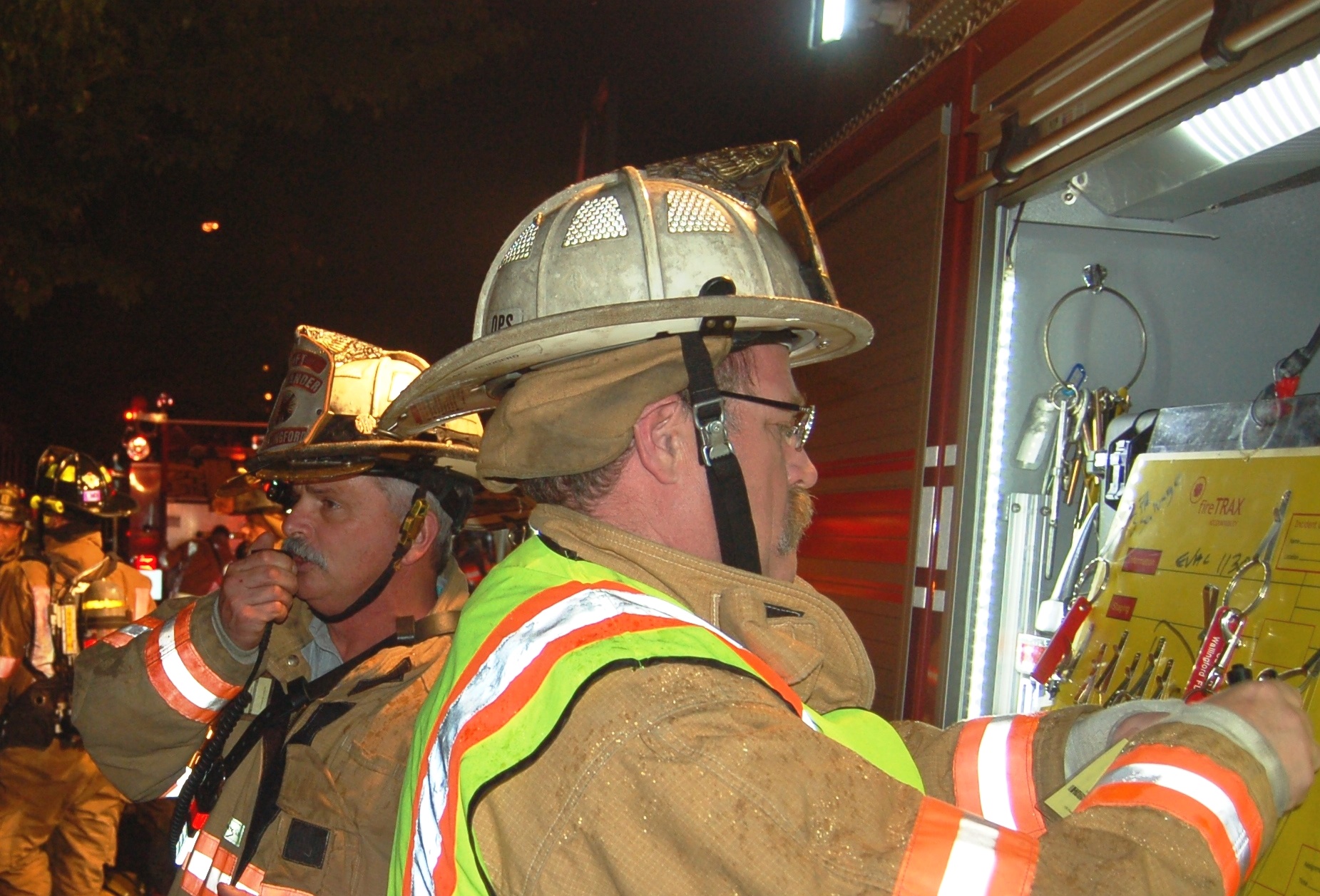

(2-3) Without command, it would be chaos. (Photos by John Rainey and Jim Duffy, respectively.)
• Command. The incident commander (IC) of any incident is one of the most critical positions on the fireground. Without a solid command structure, buildings would burn down, firefighters would get hurt, and the LODD numbers would increase. One person must be in charge, leading the troops at every incident. The attack and extinguishment of private dwelling fires are complex and extremely time-sensitive. These tasks must be coordinated and controlled through command to ensure all personnel are operating out of the same playbook. All companies must be aware of where other companies are operating and what they are doing. Although all are equally important to the extinguishment of a residential fire, they are nothing if they do not work together and in unison. This coordination is Command’s responsibility. Many of these operations can be arranged ahead of time with standard operating procedures (SOPs) and standard operating guidelines (SOGs). You can have assignments based on arrival order, which will free Command to work on the action plan; firefighters will know what should happen based on those SOPs. It has been said that a fireground is organized chaos. Without Command it would simply be chaos.

(3) A successful search by Rescue 4, Fire Department of New York Firefighter Cancro. (Photo by Vic Nicastro.)
• Search. The primary mission of the fire service is to save lives. Without a firefighter completing the search, we will not rescue civilians. One of the basic functions that saves the most lives has even changed! The changes in building construction and fuel loads have directly impacted our search techniques and the time we have to complete them. The private dwellings of today have open-floor plans, cathedral ceilings, energy-efficient windows, and other mechanisms in place to keep the buildings tighter and more energy efficient; and that directly affects today’s fires and our searches. Some of the search techniques of yesterday just do not work today. We cannot create flow paths by taking windows as we go, the oriented search must be altered, interior doors must be controlled, and door chocks should not be put in place until water is flowing and extinguishing fire. Most importantly, the search team must continually be aware of the fire’s location and progress and isolate themselves from it whenever possible. Remember, we must be successful in our search because as a wise young lady once told us, “We have a lot of children in our neighborhood, but none to spare”!
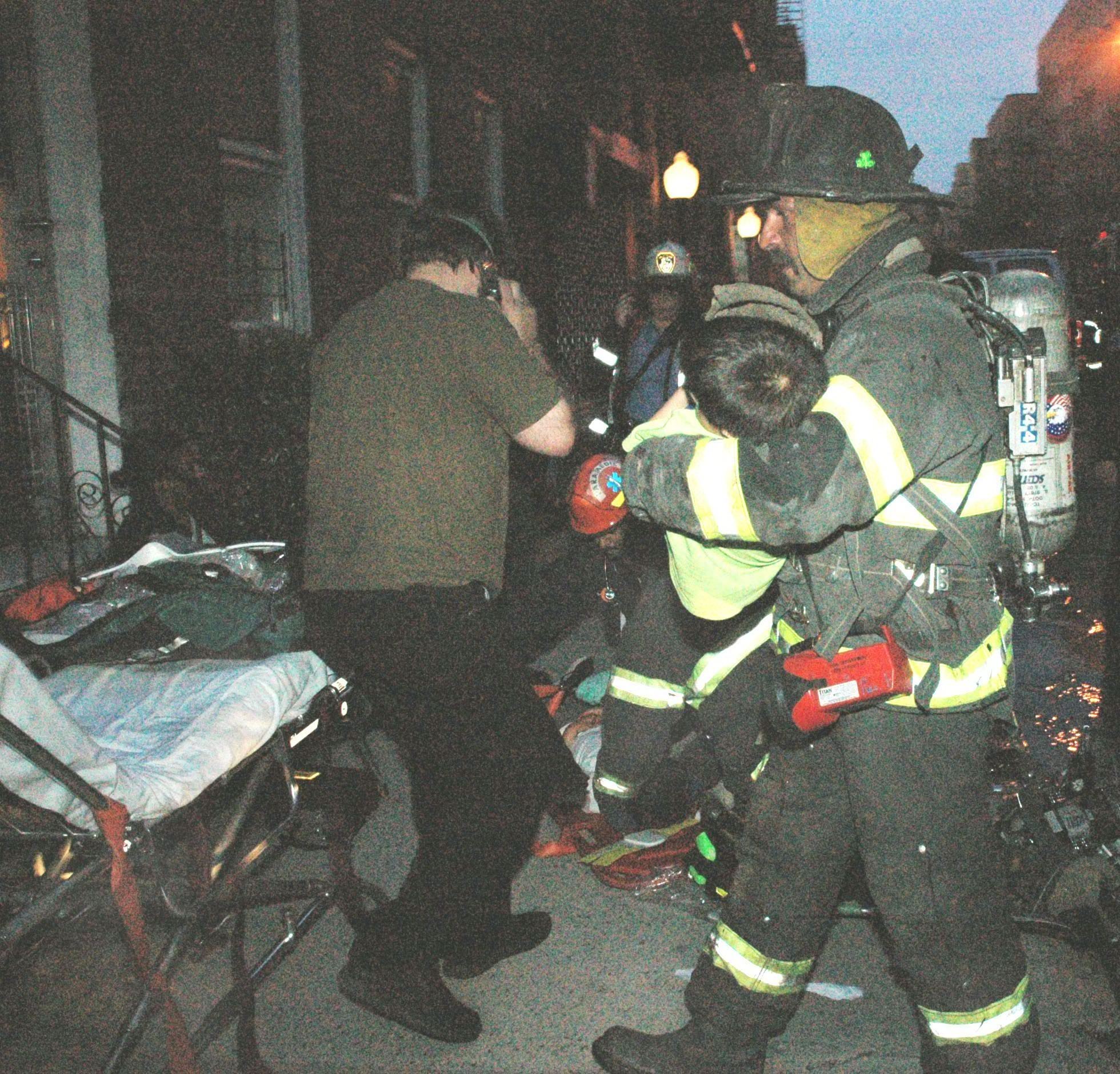
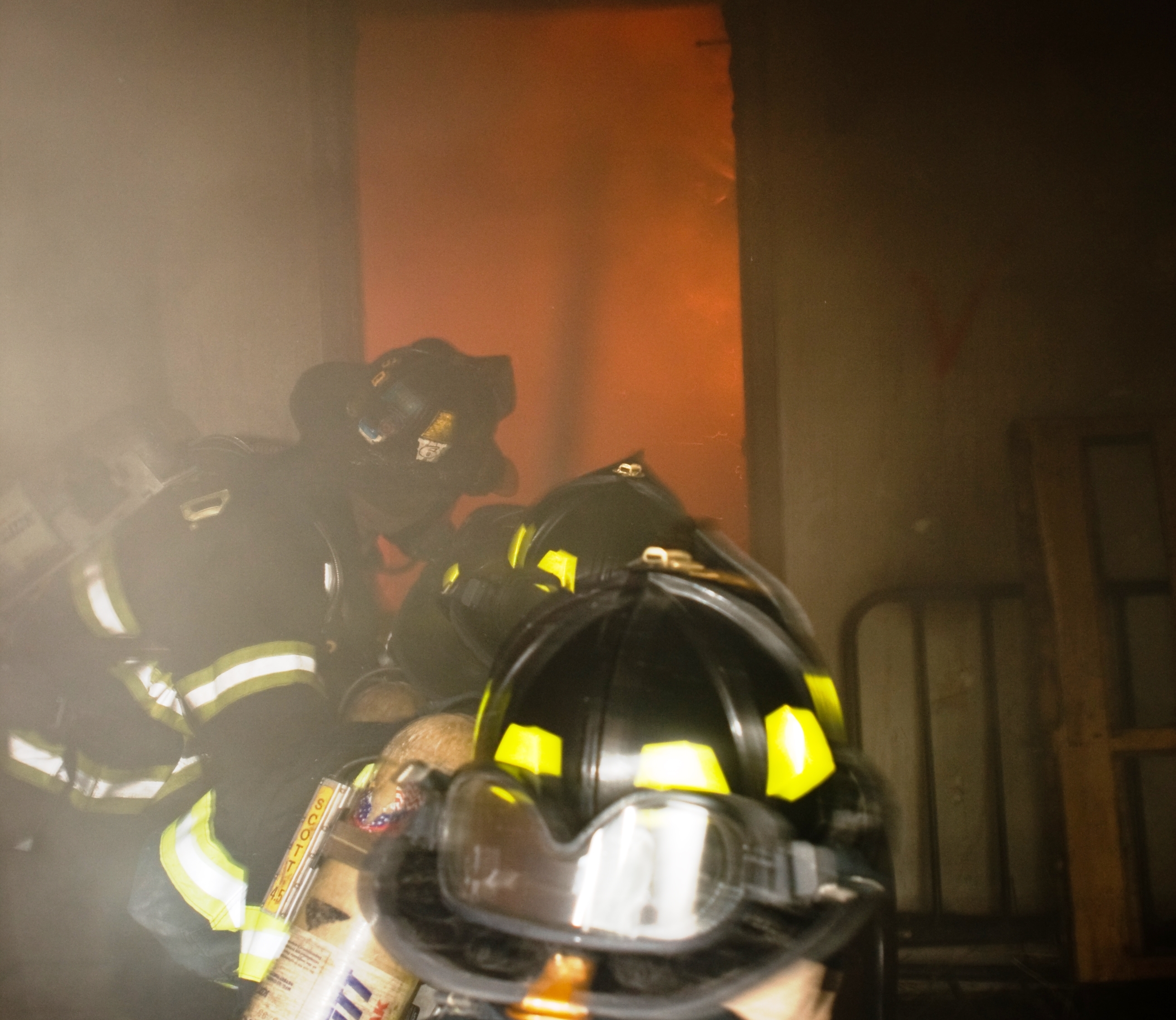
(4) Fire attack is our most basic skill. (Photo by Pat Eagan.) (5) Putting water on the fire usually makes things better. (Photo by Trevor Ashe.)
• Fire Attack. One of the most basic skills on the fireground is to make the stretch and apply water to the fire. By getting the first line in place and flowing water, we extinguish the fire, and most of the other problems go away. Offensive and defensive attacks have been the two most basic operational modes for fire attack for centuries, and still exist today. Recently, the definitions have been challenged, and some changes or additions to the definitions have been made. Regardless of how you slice it, fire attack still comes down to the basic function of “putting the wet stuff on the red stuff” or putting water on the fire. How we get that done and with what type of equipment is changing and will be debated for decades. Regardless of the equipment or the debates, we must still be proficient in making the stretch to put out the fire. In today’s fire environment, we must move this up on the priority list, marry engine companies if we have to, and alter our previous beliefs on offensive and defensive attacks. This is necessary because we must get the line in place and begin flowing water on the fire as quickly as possible. When stretching towards the fire, you must be aware that you may be working in the flow path and heated smoke and fire gases are moving from the high-pressure fire area towards the low-pressure area created when you entered. You must be prepared for fire growth as more oxygen is drawn to the fire. When you feel this heat and see rollover, these are indications that flashover, which can occur in as little as two minutes in the modern fire environment, is not far behind. You must begin flowing water quickly. This simple action can reduce interior temperatures by hundreds of degrees, making it safer for firefighters and occupants.
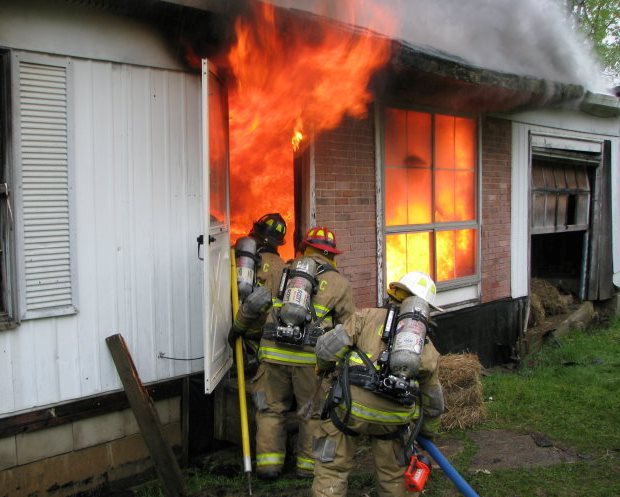
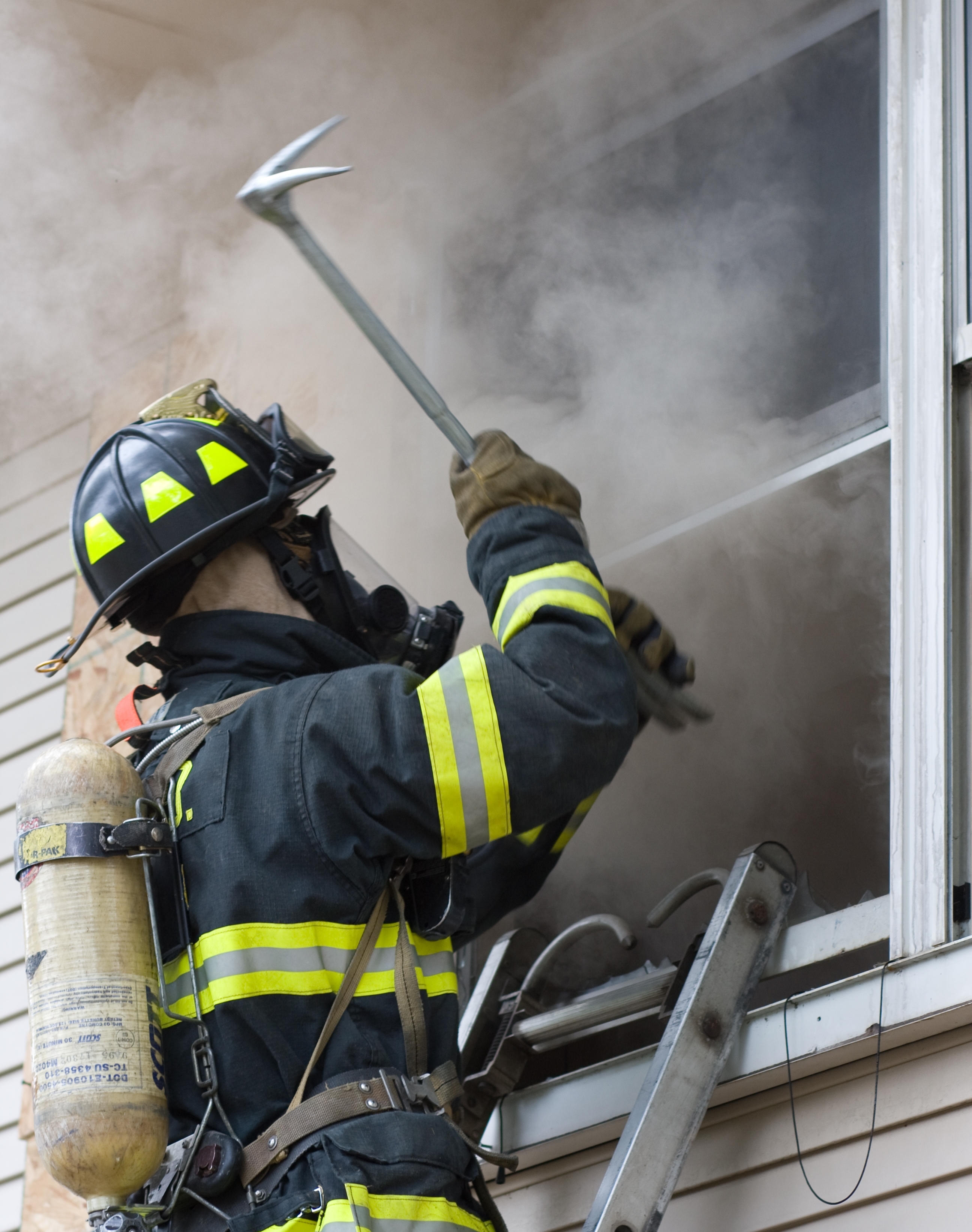
(6-7) Ventilation must be coordinated with fire attack. (Photos by Jim Duffy and John Rainey, respectively.)
• Ventilation. Ventilating the private residential building is one of the most critical skills on the fireground. It must be completed properly every time. Ventilation, if done correctly and timed right, will make search and fire attack more efficient and, more importantly, safer for the interior crews. If not coordinated with fire attack or if done in the wrong place, improper ventilation could unintentionally draw fire onto the engine and search crews, making conditions completely untenable. At a minimum, this action will make you fail in your mission and lose the structure; at its worst, you could fail to rescue a savable victim or could lose a brother or sister firefighter. Live fire training in acquired structures has dramatically decreased over the years. The majority of live fire training takes place in dedicated burn buildings that do not behave as a true residential structure fire. Fire recruits at every level are being set up for failure when they are taught how to complete ventilation within a burn building only. One of the most important components of ventilation is something most firefighters do not have–patience! This is especially true in smaller, personnel-limited departments where the truck/vent team must perform many other tasks. If we vent without a charged hoseline in place on a ventilation-limited fire, we may cause a flashover while members are working in the flow path. Recent studies by the Underwriters Laboratories Firefighter Safety and Research Institute (UL) and the National Institute of Standards and Technology (NIST) concluded that many of today’s fires are oxygen limited, not fuel limited as in the past. We must have patience and have direct coordination with the engine company to ensure ventilation is coordinated with the water flowing on the fire. Be aware that forcing entry to stretch lines or search should always be considered ventilation and that you must be prepared for the fire’s reaction to this, good or bad.
Command, search, fire attack, and ventilation are the four tactical perspectives of every fire. We must refocus our training and education toward these basic fireground tactics. We must understand how and why we perform these tactics and how they work hand-in -and. We must also learn how to more effectively coordinate these tactics.
In the next 24 hours, there will be 1,000 fires in a home that will require a response from a local fire department, your fire department. Will you be ready? Are your members ready? Will every one of your members return safely after your next residential structure fire? We must ensure your next run includes a round-trip ticket by training on the four tactical perspectives of the fireground. We must get all of our members to take that training and appropriately apply it to today’s fireground. Most departments are not getting enough work to improve at coordinating these skills, so you must practice and train repeatedly. Officers and firefighters should go to seminars like the Fire Department Instructors Conference take classes at the local academies, and read the UL and NIST studies and apply them to your own resources, demographics, and construction. Today, there are many outstanding training opportunities throughout the country. If you can’t get to any near you, there are many Internet-based training sites like FireEngineering.com. It is your responsibility to seek out these opportunities and improve your knowledge and skills. Your brother and sister firefighters and your families are worth the effort. We must make the commitment to ensure everyone returns home safely from every run, every day.
BIOS
P.J. Norwood is a deputy chief training officer for the East Haven (CT) Fire Department and has served four years with the Connecticut Army National Guard. He authored Dispatch, Handling the Mayday (Fire Engineering Books and Videos, 2012), co-authored Tactical Perspectives of Ventilation and Mayday DVDs (2011, 2012), and he was a key contributor to the Tactical Perspectives DVD series. He is an FDIC instructor, Fire Engineering contributor, Fire Engineering University faculty member, co-creator of Fire Engineering’s weekly video blogs “The Job,” and hosts a Fire Engineering Blog Talk Radio show. He serves on the UL Technical Panel for the Study of Residential Attic Fire Mitigation Tactics and Exterior Fire Spread Hazards on Fire Fighter Safety .He has lectured across the United States and overseas. He is certified to the instructor II, officer III, and paramedic level.
Jim Duffy has more than 35 years in the fire service, and has served as battalion chief/shift commander in the Wallingford (CT) Fire Department for the past 15 years. He is a former captain of the Mineola, Long Island (NY) Fire Department. He is a nationally certified fire instructor and an adjunct instructor for Middlesex County Regional Fire School. He co-hosts Fireground Strategies and other Stuff from the Street on Fire Engineering Talk Radio with Anthony Avillo. Duffy is a co-author of the Tactical Perspective DVD series (Fire Engineering) and the lead in the Search DVD. He was the division chief in charge of the Yale School of Medicine Survivability Study on the Last Chance SCBA Back-Up Filter. He lectures on a variety of firefighting subjects throughout the country and is a presenter at FDIC. He teaches the Wallingford Fire Department’s Recruit/Firefighter.

